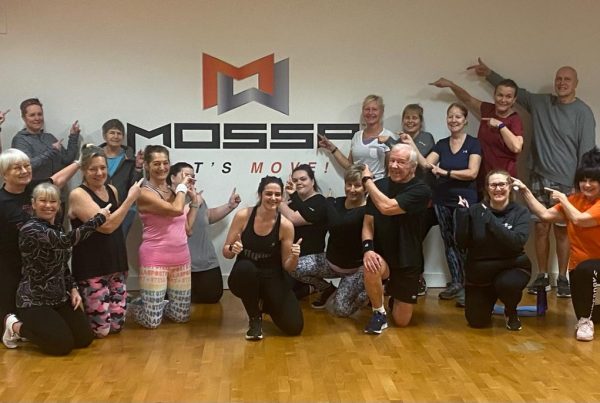Kris Tynan shares eight top drills that fall under the banner of ‘stealth exercise’. Intrigued? Read on!
The beauty of the following types of drills is that, while it’s obvious they embrace the modalities of co-ordination, cognitive function and either/or strength, mobility, balance or cardio (depending on the make-up of the drill), these latter modalities are cleverly wrapped up in the ‘game’, so they fall under the term ‘stealth exercise’, in as much as the participants don’t appreciate the extent to which they are exercising. Another factor is the enormous psychosocial benefits that are implicit in the interaction and fun involved.
NB: As my classes are mainly for older adults and people with long-term conditions, the exercise examples I give are appropriate for this demographic. If your classes are more able and agile, you can adapt the moves accordingly.
1. Paper/rock/scissors
Format: Pairs
Equipment: None
Adapt this classic game to make it active by creating ‘moves’ to do depending on whether you are the winner, loser or it’s a tie. In this clip, the winner gets to squat while the loser walks away for four steps and then returns.
The intensity of the moves can be modified to suit your class. For example, for more able classes, the winner does a burpee and the loser does four jumping jacks.
As a reminder, rock beats scissors, paper beats rock and scissors beat paper.
2. Capture the flag
Format: Pairs
Equipment: Bags/chairs
This should be more accurately named ‘Grab the Bag’ but, as it is an adaptation of the iconic Capture the Flag game, I like to call it that. In this clip, one of the class members is making the calls – this involves following directions until he calls “bag”, at which point it is a race for the bag!
As a safety issue, watch out for the risk of hands hitting the back of the chair – you might need a rule in place to just use the ‘front’ hand. This can also be done with the bag balanced on a cone for younger, more agile classes.
3. Boy called Sue
Format: Circle
Equipment: None
Moving around the circle, each participant comes up with either a boy’s name, a girl’s name or one that could apply to both sexes alphabetically – so person 1 might say Adam, person 2 says Bridget and person 3 might say Chris. When it is a boy’s name (for example, Adam) everyone punches in the air with alternate fists; when it’s a girl’s name, the move is ‘fast feet’, and when the name could apply to either sex, perform both moves together. Shortened names are allowed.
4. Circle ball pass (L/R)
Format: Circle
Equipment: Balls or bean bags, whistle
Start with one ball and give the following instructions: “One whistle blow means pass the ball to your left; two whistle blows to the right; three whistle blows, the person who has the ball bounces it on the spot while the rest of us balance on one leg for 10 seconds.”
Start with just the one ball but add in more balls, so there are three or four moving around the circle. This keeps participants on their toes, working on reaction time and peripheral vision particularly.
5. Pass and switch
Format: In fours
Equipment: Two balls or bean bags
This is another good drill with balls (although balls can be substituted with bean bags) but the limitation is that it can only be done in a team of four. The video clip demonstrates how it works. Once the pass has been made to the receivers, they switch sides. This is a great teamwork exercise as the passers need to throw at the same time and the receivers have to co-ordinate switching with each other.
6. Four square
Format: Open space
Equipment: None
Set up so that everyone faces the same way with an imaginary square around them divided into four quadrants. Allocate each quadrant a number, with 5 being in the middle (see example). 1 is top left, 2 is top right, 3 is back left and 4 is back right.
Call out numbers in a sequence and have participants move to the relevant quadrant (e.g., 2 3 4 3 5 in the correct order). Depending on their functionality, they can take a step or a little jump landing on two feet. If a number is repeated – for example, 2 3 3 5 5 – the second time requires a balance on one leg or placing hands on head (you can change up these moves).
Advance the drill by having the participants make a quarter turn but the quadrant numbers on the floor REMAIN IN THE SAME POSITION. For example, if you make a quarter turn to the right on the above square, 2 will become front left, 4 front right, 1 back left and 3 back right. 5 remains in the middle.
Make it more interactive by asking participants for a sequence everyone has to follow.
7. Disobedience
Format: Open space
Equipment: None
Have the class face the caller and be well spaced out. An arm span away from the person beside them is a good guide.
Using the calls “right”, “left”, “forward” and “backward”, the class responds by taking a step (or small jump) in that direction and shouting the word out loud at the same time. For example, a call of “right” would have everyone stepping to the right and saying “right”. This is obedience. Disobedience is when the class DOES what the caller says but SAYS the opposite (e.g., steps right but says “left”). You can obviously switch it, so they DO the opposite but SAY what the caller says.
This is tricky but lots of fun; however, a word to the wise – don’t have the caller do the moves as well, as this proves very confusing!
8. Go to Rome
Format: Open space
Equipment: None
Set up so that everyone faces the same way with space around them. Allocate a city to each of the four points of the compass (see example). Wellington is to the front, Rio to the left, Rome to the right and Budapest behind.
Call out the city and have participants move to that position. Depending on their functionality, participants can take one step, a shuffle, lunge or jump landing on two feet. Make it more interactive by having one of your participants stand at the front and make the calls.
Three variations could be:
Add more cities to the points of the compass so that you have up to eight.
Call the country that the city is in (e.g., calling Brazil would mean moving to the left, for Rio).
Move to the city called but say the opposite (similar to disobedience).
I hope you enjoy these drills. I have a belief that if my class hasn’t laughed at themselves, each other or me, it hasn’t been a good class and I hope you feel the same way.








